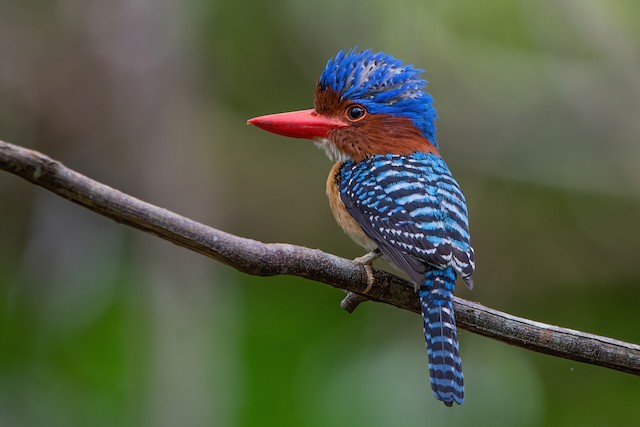A brightly colored bird possessing brightly colored bands, dominated by a very large, swollen head!

Meet the Ringed Kingfisher

The ringed kingfisher (Lacedo pulchella) is an arboreal kingfisher and the only member of the genus Lacedo. Measuring 20cm in length, the ringed kingfisher has a stout red beak and a short crest that slowly rises and falls at will. It shows surprising sexual dimorphism compared to most of its relatives. The adult male has a chestnut forehead, cheeks, and nape, along with a bright blue cap. The rest of the upper part, wings and tail are black with blue bands. The chest, flanks and tail are reddish, the central belly is white.
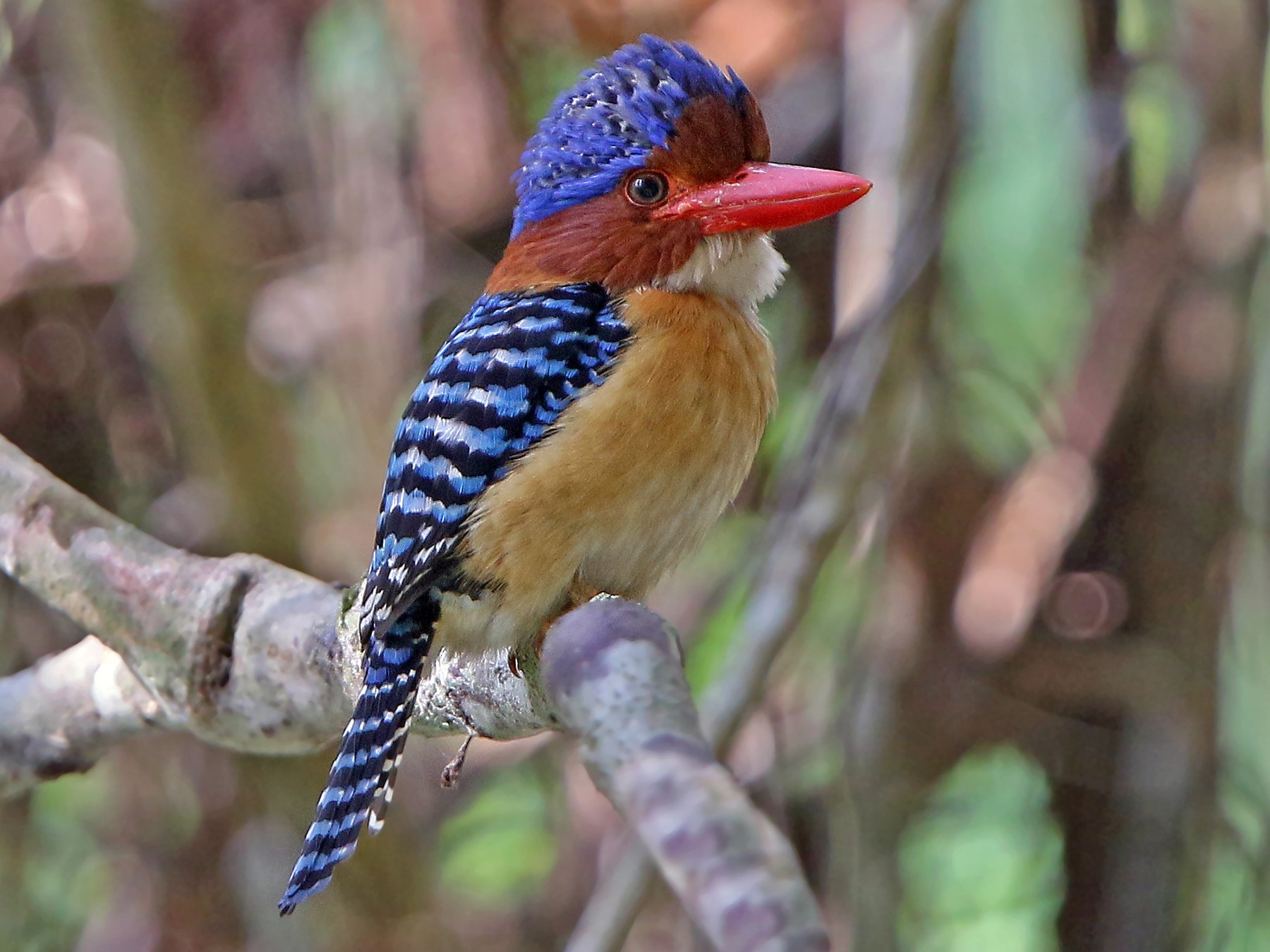
The adult female is almost as striking as the male, with black and rufous banded upperparts. Their underparts are white with some black bars on the chest and flanks.
Young birds are more boring than adults.
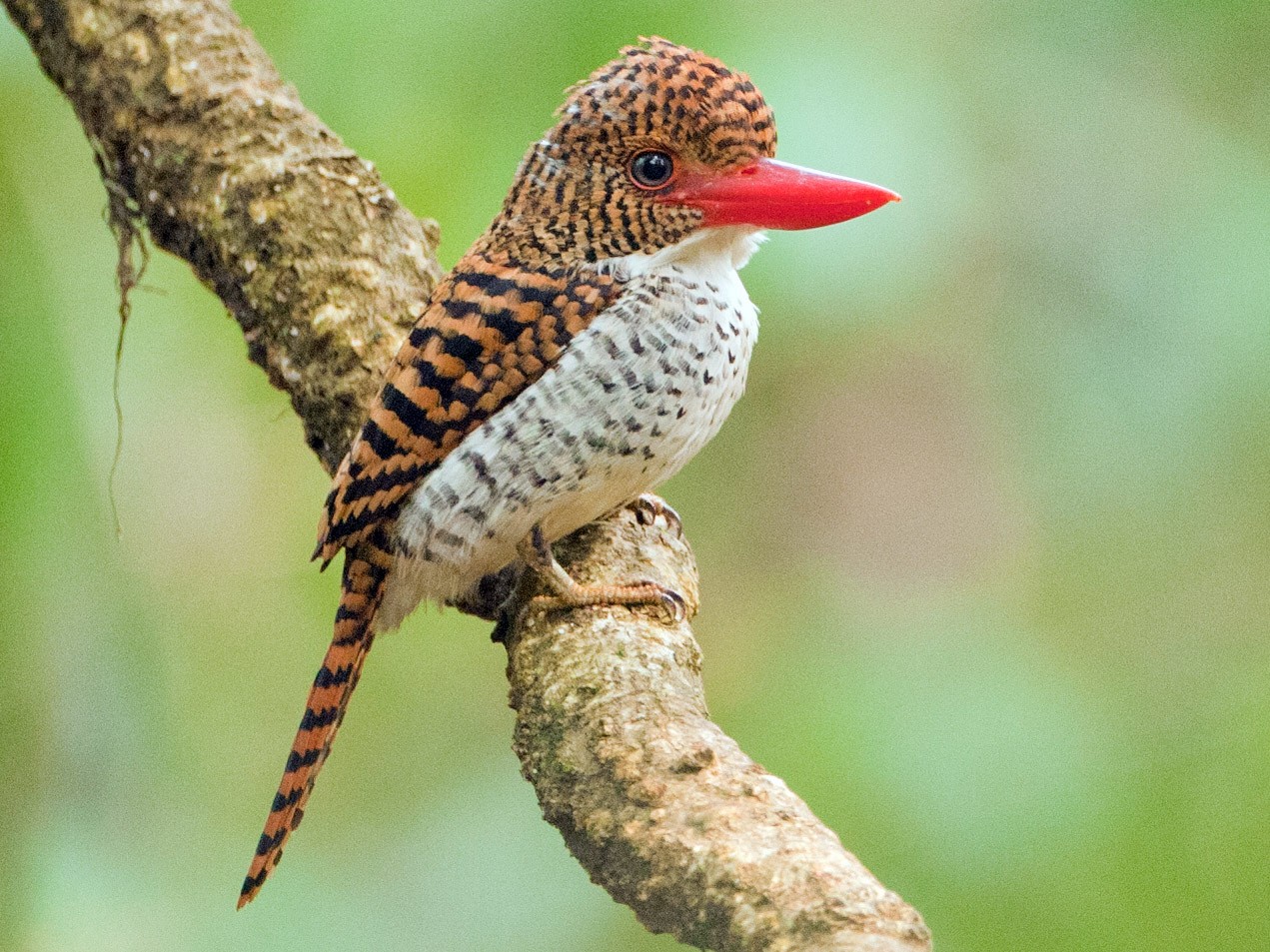
These birds are endemic and found in the lowland tropical forests of Myanmar, Thailand, Cambodia, Vietnam and Laos. Malaysia, Sumatra, Java and Brunei.

Photo courtesy of tontontravel / CC BY-SA 2.0
Unlike most kingfishers, the ringed kingfisher does not need ponds or streams in its territory. These birds prefer lowland tropical forests found up to 1700 m in Brunei, but usually below 1100 m altitude in the rest of their range.
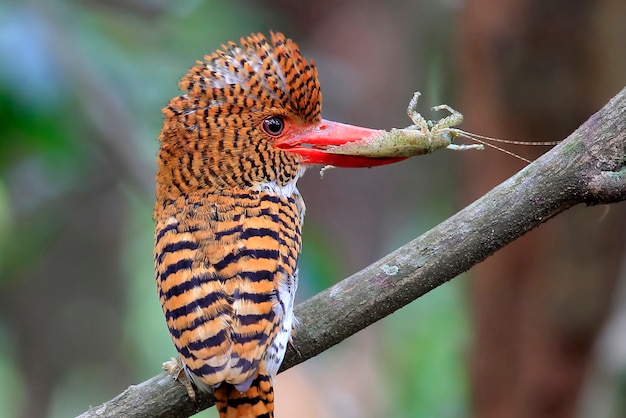
Ringed kingfishers hunt large insects and occasionally small lizards, usually caught in trees. But sometimes they also hunt at ground level.
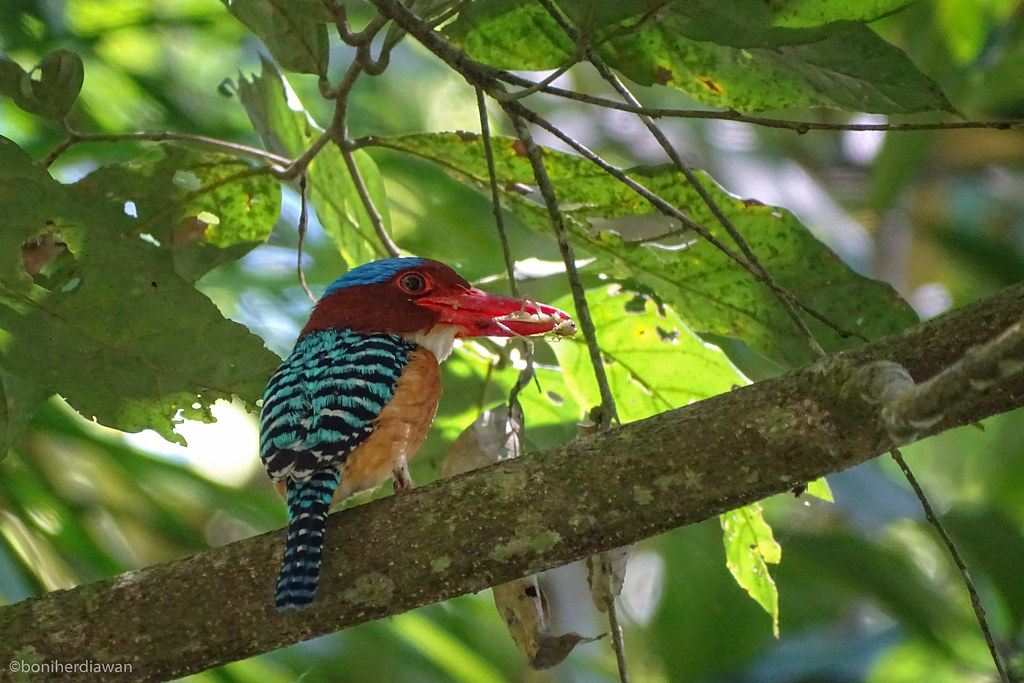 “Cekakak batu/Ringed Kingfisher” by boniherdiawan is licensed under CC BY 2.0.
“Cekakak batu/Ringed Kingfisher” by boniherdiawan is licensed under CC BY 2.0.
During the breeding season, a nest is built in a hole in the trunk of a rotting tree or sometimes in the spherical nest of tree termites. Two to five white eggs are usually laid inside.

This species is rare but widespread throughout much of its range. Unfortunately, it is rare in Java, very rare in Sumatra and extinct in Singapore.
